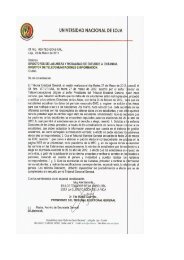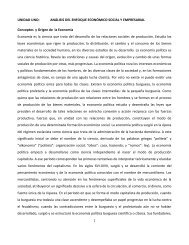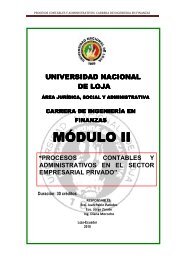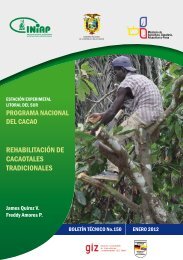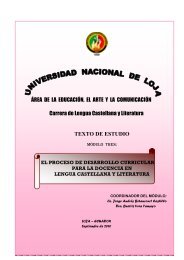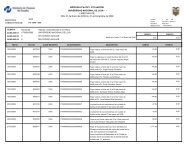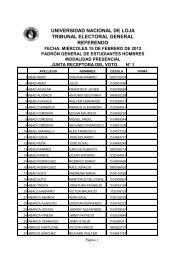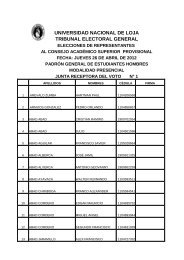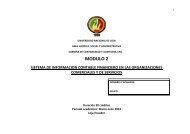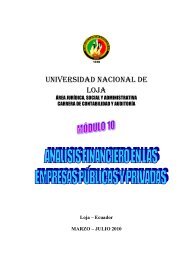module 5 planning of the english language teaching-learning process
module 5 planning of the english language teaching-learning process
module 5 planning of the english language teaching-learning process
You also want an ePaper? Increase the reach of your titles
YUMPU automatically turns print PDFs into web optimized ePapers that Google loves.
UNIVERSIDAD NACIONAL DE LOJA<br />
Área de la Educación el Arte y la Comunicación<br />
English Language Career<br />
Note: Because <strong>the</strong> student is being asked to give genuine response, it is only natural<br />
that you should respond to what he or she says in some way, even it is only to smile<br />
and to say, 'fine', “good”, “right', etc.<br />
Mini role plays cued by pictures<br />
In <strong>the</strong> above example <strong>the</strong> students are being asked to express <strong>the</strong>ir preferences.<br />
Pictures provide one way <strong>of</strong> stimulating and giving reference to such "mini' but real<br />
conversations. An alternative ¡s to have mini role plays in which <strong>the</strong> students pretend to<br />
be a character. What <strong>the</strong> students say is cued by <strong>the</strong> picture and might be in response<br />
to what is said to <strong>the</strong>m. The teacher or ano<strong>the</strong>r student might provide The o<strong>the</strong>r role.<br />
TEACHER: What are you doing this evening, Roger? (asking <strong>the</strong> question and <strong>the</strong>n<br />
showing a picture <strong>of</strong> a basketball match)<br />
STUDENT: I'm going to a basketball match.<br />
TEACHER: That's great! /how interesting/Ra<strong>the</strong>r you than me!<br />
The slow picture reveal<br />
The card can be put in an envelope and <strong>the</strong>n withdraw a centimeter at a time. As <strong>the</strong><br />
students see more <strong>of</strong> <strong>the</strong> picture ask <strong>the</strong>m lo try lo identify what <strong>the</strong>y can see and to<br />
predict what might appear next in <strong>the</strong> picture. This gives guided practice in <strong>the</strong> use <strong>of</strong><br />
descriptive <strong>language</strong>.<br />
Open communicative practice<br />
Characteristics and techniques: <strong>the</strong> cards can be juxtaposed rapidly.<br />
Imagining connections<br />
Show <strong>the</strong> students any two picture cards toge<strong>the</strong>r and ask <strong>the</strong>m to imagine a<br />
connection between <strong>the</strong>m.<br />
[Escribir texto] Página 130



